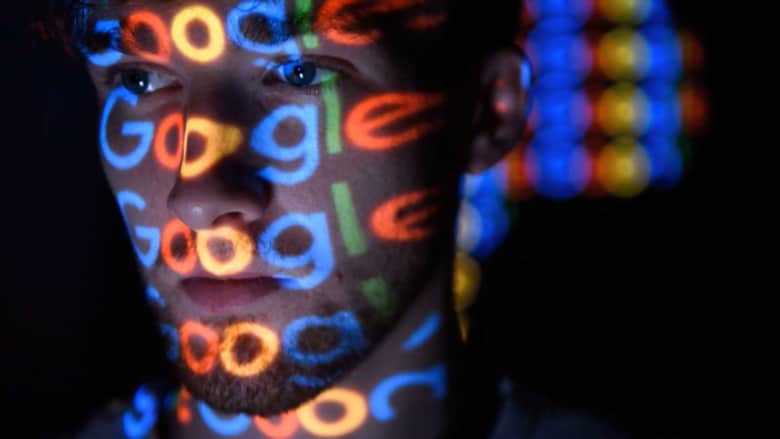دبي، الإمارات العربية المتحدة (CNN)-- تعمل شركات التكنولوجيا باستمرار على تضخيم قدرات الذكاء الاصطناعي المتطور. ولكن سارعت غوغل لنفي مزاعم بأن أحد برامجها قد تقدم كثيرًا لدرجة أنه أصبح لديه القدرة على إدراك المشاعر والأحاسيس.
وفقًا لمقال في صحيفة واشنطن بوست يوم السبت، قال أحد مهندسي غوغل إنه بعد مئات التفاعلات مع نظام ذكاء اصطناعي متطور لم يتم إصداره بعد يسمى LaMDA، يعتقد أن البرنامج قد حقق مستوى من الوعي.
رفض الكثيرون في مجتمع الذكاء الاصطناعي في المقابلات والبيانات العامة ادعاءات المهندس، بينما أشار البعض إلى أن قصته تسلط الضوء على كيف يمكن للتكنولوجيا أن تقود الناس إلى تخصيص سمات بشرية لها. لكن يمكن القول إن الاعتقاد بأن الذكاء الاصطناعي من غوغل قد يصل إلى هذه الدرجة من الوعي، يسلط الضوء على مخاوفنا وتوقعاتنا لما يمكن أن تفعله هذه التكنولوجيا.
يعد LaMDA، الذي يرمز إلى "Language Model for Dialog Applications" واحدًا من العديد من أنظمة الذكاء الاصطناعي واسعة النطاق التي تم تدريبها على مساحات كبيرة من النصوص من الإنترنت ويمكنها الاستجابة للمطالبات المكتوبة. وتهتم بشكل أساسي بإيجاد الأنماط والتنبؤ بالكلمة أو الكلمات التي يجب أن تأتي بعد ذلك. أصبحت مثل هذه الأنظمة جيدة بشكل متزايد في الإجابة على الأسئلة والكتابة بطرق يمكن أن تبدو بشرية.
وبحسب ما ورد، قال المهندس بليك ليموين لصحيفة واشنطن بوست إنه شارك الدليل مع غوغل على أن LaMDA كانت لديها القدرة على تجربة الأحاسيس، لكن الشركة لم توافق. قالت غوغل في بيان يوم الاثنين، إن فريقها الذي يضم متخصصين في الشؤون الأخلاقية وتقنيين، "قد راجعوا مخاوف بليك وفقًا لمبادئ الذكاء الاصطناعي الخاصة بنا وأبلغوه أن الأدلة لا تدعم مزاعمه".
ونشر ليموين في 6 يونيو على موقع Medium أن غوغل وضعته في إجازة إدارية مدفوعة الأجر "فيما يتعلق بتحقيق في مخاوف أخلاقية بشأن الذكاء الاصطناعي كنت أثيرها داخل الشركة"، وأنه قد يُطرد "قريبًا".
وأكد متحدث باسم غوغل أن ليموين لا يزال في إجازة إدارية. وفقًا لصحيفة The Washington Post، فقد تم منحه إجازة لانتهاكه سياسة السرية للشركة. ولم يكن ليموين متاحا للتعليق يوم الاثنين.
أدى الظهور المستمر لبرامج الحوسبة القوية المدربة على البيانات الضخمة إلى إثارة مخاوف بشأن الأخلاقيات التي تحكم تطوير واستخدام هذه التكنولوجيا. يُنظر أحيانًا إلى التطورات من منظور ما قد يأتي، وليس ما هو ممكن حاليًا.
تكررت ردود أولئك في مجتمع الذكاء الاصطناعي على تجربة ليموين حول وسائل التواصل الاجتماعي خلال عطلة نهاية الأسبوع، ووصلوا عمومًا إلى نفس النتيجة: إن الذكاء الاصطناعي في جوجل ليس قريبًا من الوعي الذاتي.
وصف غاري ماركوس المؤسس والرئيس التنفيذي لشركة Geometric Intelligence، التي تم بيعها لشركة أوبر، ومؤلف الكتب بما في ذلك "Rebooting AI: Building Artificial Intelligence We Can Trust" في تغريدة، فكرة LaMDA على أنها "هراء على ركائز متينة".
في مقابلة يوم الاثنين مع CNN Business، قال ماركوس إن أفضل طريقة للتفكير في أنظمة مثل LaMDA هي بمثابة "نسخة مجيدة" من برنامج الإكمال التلقائي الذي قد تستخدمه للتنبؤ بالكلمة التالية في رسالة نصية. إذا كتبت "أنا جائع حقًا لذا أريد الذهاب إلى"، فقد يقترح عليك "مطعم" ككلمة تالية. لكن هذا تنبؤ تم باستخدام الإحصائيات.
قال جيبرو، المؤسس والمدير التنفيذي لمعهد أبحاث الذكاء الاصطناعي الموزع أو DAIR في مقابلة، إن ليموين ضحية للعديد من الشركات التي تدّعي أن الذكاء الاصطناعي الواعي أو الذكاء العام الاصطناعي -عبارة عن فكرة تشير إلى الذكاء الاصطناعي الذي يمكنه أداء المهام الشبيهة بالبشر والتفاعل معنا بطرق ذات مغزى- ليست بعيدة.
واضاف جيبرو: "ما يحدث هو أن هناك مثل هذا السباق لاستخدام المزيد من البيانات، والمزيد من الحوسبة، للقول إنك أنشأت هذا الشيء الذي يعرفه الجميع، ويجيب على جميع أسئلتك أو أي شيء آخر.. إذن كيف تتفاجأ عندما يأخذ هذا الشخص الأمر إلى أقصى الحدود؟"

